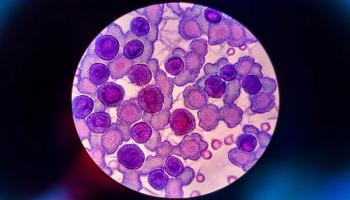
Pharmacy Practice in Focus: Health Systems
- September 2020
- Volume 9
- Issue 5
Many Platforms Offer Rapid Detection in Bloodstream Infections

Institutions should consider optimal targets, testing volumes, and notification and reporting practices when making their choice.
Bloodstream infections (BSI) are a significant source of morbidity and mortality.
Rapid identification of infectious pathogens is paramount in assuring therapy initiation is both appropriate and timely. Traditional blood culture methods may take up to 96 hours for organism identification (ID) and susceptibility, and delays in initiation of optimal therapy have been associated with increases in mortality.1,2 As such, rapid diagnostic testing (RDT) has become an attractive tool in the diagnosis and management of BSI and has been associated with improvements in time to initiation of appropriate antibiotic therapy, mortality, length of stay, hospital costs, and decreased time to de-escalation.3,4 The ability to de-escalate therapy more quickly may reduce unintended consequences of antibiotic therapy.5 Several platforms are available to institutions seeking to implement RDT for BSI. What follows is a brief overview of the available technologies.
Polymerase Chain Reaction
Polymerase chain reaction (PCR) platforms vary in the number of gene targets per organism and/or number of organisms per panel. PCR can be run directly from a positive blood culture prior to growth on standard culture media. The GeneOhm StaphSR (BD Diagnostics) assay and Xpert MRSA/SA BC (Cepheid) assay (Cepheid) are single-organism/ multitarget panels with a turnaround time of 1 to 2 hours.6 These panels identify Staphylococcus aureus with 1 target and methicillin resistance using a second target.7 Multiorganism/multitarget panels can concurrently detect gram-negative and gram-positive bacteria, yeast, and genotypic resistance markers (carbapenem, methicillin, or vancomycin resistance). FilmArray BCID (bioMérieux/BioFire) and Verigene BC-GP/-GN (Luminex) are multiorganism/ multitarget panels with turnaround times of 1.2 hours and 2 to 2.5 hours, respectively.7
Implementation of PCR within antimicrobial stewardship programs (ASPs) has been shown to improve outcomes. For example, Banerjee and colleagues investigated outcomes of traditional ID versus rapid multiplex PCR (rmPCR) with and without real-time antimicrobial stewardship (AS) intervention in 617 patients with BSI.5 Their study demonstrated reduced vancomycin use for organisms not necessitating vancomycin, increased use of narrow spectrum agents, and increased de-escalation. By comparison, a study by Tseng et al evaluated the implementation of rmPCR without the provider being notified or AS recommendations. They observed a decrease in time to organism ID in the rmPCR group (gram negative, 2.6 hours vs 25.8 hours; P < .001; gram positive, 17.4 hours vs 28.8 hours; P = .0002), but did not identify significant changes in antimicrobial therapy.8 The differences between these 2 studies highlight a larger trend in the RDT implementation literature that indicates the benefits of PCR are best realized when combined with intervention from an ASP.7,9,10
Matrix-Assisted Laser Desorption/ Ionization Time of Flight
Mass spectrometry cross-references bacterial protein signatures to reference libraries to produce organism ID in 20 to 60 minutes. One of the first studies that evaluated this demonstrated that implementation of matrix-assisted laser desorption/ionization time of flight with AS with prospective audit and feedback improved time to effective antibiotic therapy (30.1 vs 20.4 hours; P = .021) and improved time to optimal therapy (90.3 vs 47.3 hours; P < .001). Similar findings have been confirmed in multiple other observational studies.11 Interestingly, a recent randomized controlled trial without prospective audit and feedback demonstrated a similar proportion of patients on optimal antibiotics at 24 or 48 hours.12
Peptide Nucleic Acid Fluorescence in Situ Hybridization
Peptide nucleic acid fluorescence in situ hybridization (PNA-FISH) uses a DNA probe to target pathogen ribosomal RNA from positive blood cultures.6 PNA-FISH and QuickFISH (AdvanDx) provide organism identification in 1.5 hours and 20 minutes, respectively. Commercially available assays can detect Staphylococcus aureus, coagulase-negative Staphylococcus (CoNS), numerous gram-negative rods (including E coli, Klebsiella spp, Enterobacteter spp, Proteus spp, Citrobacter spp, Serratia marcescens, Pseudomonas aeruginosa, and Acinetobacter baumannii), Enterococcus faecalis and other Enterococcus spp, and Candida spp.6
In a randomized study, patients with Enterococcus BSI were evaluated by standard blood culture processes or standard processes plus PNA-FISH. After PNA-FISH results became available, the microbiology department reported the results to the provider, along with standard comments regarding empiric therapy depending on the organism identified.13 There was no AS intervention in either arm and no difference in time to effective therapy, time to optimal therapy, length of stay, or in-hospital mortality implementation. In a separate study, the addition of AS guidance to PNA-FISH was associated with decreased hospital length of stay in patients with CoNS BSI, reduced time to effective therapy, and decreased 30-day mortality in patients with Enterococcus BSI when compared with rapid diagnostics alone.14
Accelerate Diagnostics
Accelerate PhenoTest BC Kit (Accelerate Diagnostics) combines PNA-FISH with morphokinetic cellular analysis (MCA) to provide rapid ID and susceptibility directly from a blood culture sample. MCA tracks phenotypic features including the size, shape, and division rate of individual live cells growing into microcolonies while being challenged by antibiotics to rapidly determine antimicrobial susceptibilities. This unique technology allows for antibiotic susceptibilities in 7 hours, enabling the rapid transition to definitive therapy. A single-center retrospective study investigated laboratory and clinical outcomes after the implementation of the Accelerate PhenoTest BC kit. Compared with conventional identification and antimicrobial susceptibility testing, implementation was associated with reduced length of stay (12.1 days vs 9.1 days; P = .03), time to optimal therapy (73.5 hours vs 37.5 hours; P < .001), and total antimicrobial days of therapy (9 vs 7; P = .05).15 Future studies are needed to determine the full potential of this technology in gram-negative BSI.
T2Dx
The T2Dx Instrument (T2 Biosystems) combines PCR and magnetic resonance technology to detect organisms in 3 to 5 hours from whole blood specimens without incubation.6 This technology is unique because it is the only platform reviewed that provides bacterial identification prior to positive blood cultures. The available panels include T2Candida and T2Bacteria. Limited patient outcomes data are available. However, the theoretical advantage of using the T2Dx is the potential for antimicrobial escalation within 5 hours of initial therapy. Further research is needed to fully identify the optimal way to implement this assay with an ASP.
Conclusion
Many platforms are available for rapid detection (see table) with or without antimicrobial susceptibilities in BSI. Institutions looking to implement an RDT for BSI should consider their optimal targets, testing volumes, and notification and reporting practices. The impact of these tests on both institutional and patient outcomes may vary depending on the institutional practices and platform implemented. ASPs should play a key role in decisions regarding the selection, implementation, and reporting of RDT for BSI, given their proven impact on patient outcomes, inappropriate antimicrobial use, and costs with real-time review and intervention.16
Kathryn Lincoln, PharmD, BCPS, BCIDP, is a clinical specialist for infectious diseases at Olathe Health in Kansas City, Missouri.Ryan W. Stevens, PharmD, BCIDP, is an antimicrobial stewardship/outpatient antimicrobial therapy pharmacist at the Mayo Clinic in Rochester, Minnesota.Joseph J. Carreno, PharmD, MPH, is an associate professor of infectious disease at Albany College of Pharmacy and Health Sciences in New York.
REFERENCES
- Vergis EN, Hayden MK, Chow JW, et al. Determinants of vancomycin resistance and mortality rates in enterococcal bacteremia. a prospective multicenter study. Ann Intern Med. 2001;135(7):484-492. doi:10.7326/0003-4819-135-7- 200110020-00007
- Morrell M, Fraser VJ, Kollef MH. Delaying the empiric treatment of candida bloodstream infection until positive blood culture results are obtained: a potential risk factor for hospital mortality. Antimicrob Agents Chemother. 2005;49(9):3640-3645. doi:10.1128/AAC.49.9.3640- 3645.2005
- Timbrook TT, Morton JB, McConeghy KW, Caffrey AR, Mylonaskis E, LaPlante KL. The effect of molecular rapid diagnostic testing on clinical outcomes in bloodstream infections: a systematic review and meta-analysis. Clin Infect Dis. 2017;64(1):15-23. doi:10.1093/cid/ciw649
- Barlam TF, Cosgrove SE, Abbo LM, et al. Implementing an antibiotic stewardship program: guidelines by the Infectious Diseases Society of America and the Society for Healthcare Epidemiology of America. Clin Infect Dis. 2016;62(10):e51- e77. doi:10.1093/cid/ciw118
- Banerjee R, Teng CB, Cunningam SA, et al. Randomized trial of rapid multiplex polymerase chain reaction-based blood culture identification and susceptibility testing. Clin Infect Dis. 2015;61(7):1071-1080. doi:10.1093/cid/civ447
- Rubach MP, Hanson KE. ID Learning unit-diagnostics update: current laboratory methods for rapid pathogen identification in patients with bloodstream infections. Open Forum Infect Dis. 2015;2(4):ofv174. doi:10.1093/ofid/ofv1747
- McHugh MP, Parcell BJ, MacKenzie FM, Templeton, KE; Scottish Microbiology And Virology Network Smvn Molecular Diagnostics Evaluation Group. Rapid molecular testing for Staphylococcus aureus bacteraemia improves clinical management. J Med Microbiol. 2020;69(4):552-557. doi:10.1099/jmm.0.001171
- Tseng AS, Kasule SN, Rice F, et al. Is it actionable? an evaluation of the rapid PCR-based blood culture identification panel on the management of gram-positive and gram-negative blood stream infections. Open Forum Infect Dis. 2018;5(12):ofy308. doi:10.1093/ofid/ofy308
- Bauer KA, West JE, Balada-Llasat JM, Pancholi P, Stevenson KB, Goff DA. An antimicrobial stewardship program’s impact. Clin Infect Dis. 2010;51(9):1074-1080. doi:10.1086/656623
- Wong JR, Bauer KA, Mangino JE, Goff DA. Antimicrobial stewardship pharmacist interventions for coagulase-negative staphylococci positive blood cultures using rapid polymerase chain reaction. Annals Pharmacother. 2012;46(11):1484-1490. doi:10.1345/aph.1R439
- Nagel JL, Huang AM, Kunapuli A, et al. Impact of antimicrobial stewardship intervention on coagulase-negative staphylococcus blood cultures in conjunction with rapid diagnostic testing. J Clin Microbiol. 2014;52(8):2849-2854. doi:10.1128/ JCM.00682-14
- Nadjm B, Dat VQ, Campbell JI, et al. A randomized controlled trial of matrix-assisted laser desorption ionization-time of flight mass spectrometry (MALDITOF-MS) versus conventional microbiological methods for identifying pathogens: impact on optimal antimicrobial therapy of invasive bacterial and fungal infections in Vietnam. J Infect. 2019;78(6):454- 460. doi:10.1016/j.jinf.2019.03.010
- Cosgrove SE, Li DX, Tamma PD, et al. Use of PNA FISH for blood cultures growing gram-positive cocci in chains without a concomitant antibiotic stewardship intervention does not improve time to appropriate antibiotic therapy. Diagn Microbiol Infect Dis. 2016;86(1):86-92. doi:10.1016/j. diagmicrobio.2016.06.016
- Forrest GN, Mehta S, Weekes E, et al. Impact of rapid in situ hybridization testing on coagulase-negative staphylococci positive blood cultures. J Antimicrob Chemother. 2006;58(1):154-158. doi:10.1093/jac/dkl146
- Dare RK, Lusardi K, Pearson C, et al. Clinical impact of accelerate pheno rapid blood culture detection system on laboratory and clinical outcomes in bacteremic patients. Clin Infect Dis. 2020;ciaa649. doi:10.1093/cid/ciaa649
- Huang AM, Newton D, Kunapuli A, et al. Impact of rapid organism identification via matrix-assisted laser desorption/ ionization time-of-flight combined with antimicrobial stewardship team intervention in adult patients with bacteremia and candidemia. Clin Infect Dis. 2013;57(9):1237-1245. doi:10.1093/cid/cit498
The Society of Infectious Diseases Pharmacists (SIDP) is an association of pharmacists and other allied healthcare professionals who are committed to promoting the appropriate use of antimicrobial agents and supporting practice, teaching, and research in infectious diseases. We aim to advance infectious diseases pharmacy and lead antimicrobial stewardship in order to optimize the care of patients. To learn more about SIDP, visit
Articles in this issue
about 5 years ago
Plethora of Clinical Trials Explore Gastric Cancer Treatmentsabout 5 years ago
Consider Real Costs Before Implementing a 340B Programabout 5 years ago
LTC Pharmacists Drive Positive Clinical Outcomesabout 5 years ago
Patient Assistance Programs Are the Good, the Bad, and the Uglyabout 5 years ago
When Will a Vaccine Be Ready?Newsletter
Stay informed on drug updates, treatment guidelines, and pharmacy practice trends—subscribe to Pharmacy Times for weekly clinical insights.

















































































































































































































